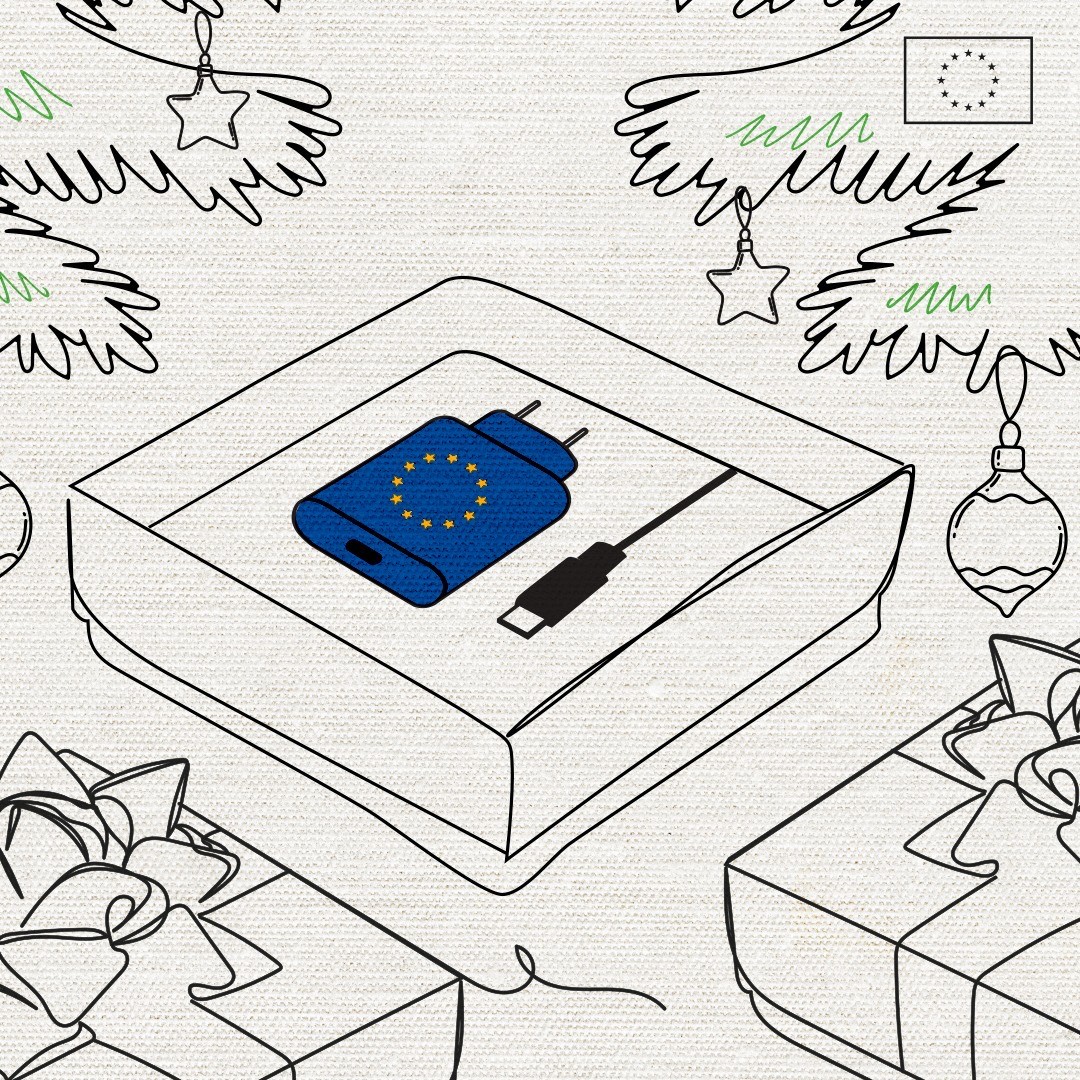cross-posted from: https://jlai.lu/post/3226934
The wait is finally over. From 2024, USB-C will be the common standard for electronic devices in the EU – and we have already seen the impact !
It means
- 🔌The same charger for all phones, tablets and cameras
- ⚡ Harmonised fast-charging technology
- 🔄Reduced e-waste
One charger to rule them all.
Now, a reality.
Learn more about the #EUCommonCharger here: https://europa.eu/!hwjj3G
Unbundling the sale of a charger from the sale of the electronic device .
The ‘common charging’ requirements will apply to all handheld mobile phones, tablets, digital cameras, headphones, headsets, portable speakers, handheld videogame consoles, e-readers, earbuds, keyboards, mice, and portable navigation systems as of 2024. These requirements will also apply to laptops as of 2026. Such transition periods will give industry sufficient time to adapt before the entry into application.
Consumers will be able to purchase a new electronic device without a new charger. This will limit the number of chargers on the market or left unused. Reducing production and disposal of new chargers is estimated to reduce the amount of electronic waste by 980 tonnes yearly
Producers will need to provide relevant visual and written information about charging characteristics, including information on the power the device requires and whether it supports fast charging. This will help consumers understand if their existing chargers meet their new device’s requirements and/or help them select a compatible charger. Combined with the other measures, this will help consumers to limit the number of new chargers purchased and save at least €250 million a year on unnecessary charger purchases.
L’attente est finalement terminée. À partir de 2024, l’USB-C deviendra la norme commune pour les appareils électroniques dans l’UE – et nous avons déjà vu son impact !
Cela signifie
- 🔌Le même chargeur pour tous les téléphones, tablettes et appareils photo
- ⚡ Technologie de charge rapide harmonisée
- 🔄Réduction des déchets électroniques
Un chargeur pour les gouverner tous. Maintenant, une réalité. Pour en savoir plus sur le #EUCommonCharger, cliquez ici : https://europa.eu/!hwjj3G
Les exigences de « charge commune » s’appliqueront à tous les téléphones mobiles portables, tablettes, appareils photo numériques, écouteurs, casques, haut-parleurs portables, consoles de jeux vidéo portables, liseuses électroniques, écouteurs, claviers, souris et systèmes de navigation portables à partir de 2024. Ces exigences s’appliquera également aux ordinateurs portables à partir de 2026. De telles périodes de transition donneront à l’industrie suffisamment de temps pour s’adapter avant l’entrée en application.
Les consommateurs pourront acheter un nouvel appareil électronique sans nouveau chargeur. Cela limitera le nombre de chargeurs sur le marché ou inutilisés. On estime que la réduction de la production et de l’élimination des nouveaux chargeurs permettrait de réduire la quantité de déchets électroniques de 980 tonnes par an.
Les producteurs devront fournir des informations visuelles et écrites pertinentes sur les caractéristiques de charge, y compris des informations sur la puissance requise par l’appareil et s’il prend en charge une charge rapide. Cela aidera les consommateurs à comprendre si leurs chargeurs existants répondent aux exigences de leur nouvel appareil et/ou les aidera à sélectionner un chargeur compatible. Combinée aux autres mesures, cette mesure aidera les consommateurs à limiter le nombre de nouveaux chargeurs achetés et à économiser au moins 250 millions d’euros par an sur les achats inutiles de chargeurs
I just wish there was a standard for marking the cables, so you could look at the cable and tell what it was capable of. All the cables and chargers look the same but have wildly different capabilities. 
and the naming scheme doesn’t make it any better, “USB 3.2 Gen 3 with USB PD and/or CuickCharge” just doesn’t make sense to rationally thinking people.
how about “USB C-C up to X amount of mbytes and 100W charging”?
And WiFi is going the opposite direction. From 802.1a/b/ax/whatever to WiFi 5, 6 etc.
(Although the MIMO chains can get a bit more complex, but still fairly simple compared to the USB bs)The charging side is complicated to mark accurately because it has to consider current and voltage. Like, a cable might be able to do 60W, but only at 2A@30V, 3A@20V would melt the cable.
We need something like resistor band labeling for chargers. Yellow for 1A, Green for 2A and another band for the charging standard such as PD QC3.0 and so on.
As it stands now we are going to need a station in stops to test cables.
Yeah i discovered that and i was extremely furious. I bought a usbc cable around 10€ and it wasn’t working because the device only supported a certain type of usbc. Apparently, there is some info about information in the eu website.
But i’m not able to understand any technical part…i just want a color : yellow charger/cable go with yellow port. Etc.
i’m not able to understand any technical part
I’ll break it down for you - it’s a long list but easy to understand:
- Some cables have four internal wires. Others have over a dozen wires.
- Some have thin wires, some have thick wires. The thick ones cost more and are less flexible - the main benefit is they can be longer while charging quickly.
- Some cables have the internal wires wrapped in plastic. Others have them wrapped in plastic then that’s wrapped in a metal shield, then that’s wrapped in another plastic layer. The latter is more reliable and not just for the cable itself (without shielding, the cable can interfere with other electronics that are near the cable - such as your computer or phone.
- Some are just ordinary cabling, and some have complex circuitry embedded in the cable to run advanced algorithms to remove noise from the cable - this is necessary to achieve high data rates at long cable lengths.
- Nearly all use copper cables. A few use fibre optic cables. This can handle even longer cable lengths
- Some cables are just like “whatever this will do”, and others are well designed and carefully manufactured/tested/etc.
.
i just want a color : yellow charger/cable go with yellow port. Etc.
There would need to be something like a fifty colors. The USB standards body is pushing cable manufacturers to use labels that show data rates (gigabits per second) and power capabilities (watts) on every cable. That will help a lot, but for all the other stuff (especially shielding and general quality…) you need to rely on either brand reputation or third party tests. Even then you need to be careful, because the best brands don’t put all those features in every cable (too expensive).
Also unfortunately at 10€ you get what you pay for. The better brands all charge more than that.
Since everyone here seems so confused by USB naming schemes, a short primer:
USB 3.0, 3.1, 3.2, and USB4 are the major and minor revision number of the standard. You don’t have to worry about it if you are not implementing it yourself.
The Gen number indicates the supported transfer speed, Gen 1 is 5Gbps, Gen 2 is 10, Gen 3 is 20, regardless of the spec revision.
(USB 2.0 is 480mbps)
Dual lane (Gen ?x2) means you take the speed of the Gen number and multiply it by 2.
The only major difference between USB 3 and 4 is that USB4 uses Type C plug only, whereas USB 3 can use a variety of connectors.
All USB-PD compliant cables support up to 100w of power delivery, only cables labeled as EPR (extended power range) supports up to 240w of power.
Isn’t there a change in how USB is represented now? They should now have the max speed and power on the cable/adapter
What the above user is saying is how it’s listed in specs and technical documents
What you are saying is how the USB IF recommends it be marketed. In theory, yours is the only one the average person should worry about these days
However in the real world it’s an absolute mess of OEMs advertising their ports as being one or the other naming schemes, or neither and just saying “USB”
I really like this. Being able to just buy bunch of newest generation Type-C and using it everywhere is awesome.
The best part is that you can help your friends. :3
Some Chinese manufacturers are already working on undermining this by releasing 12V non-PD devices that use the plug. Those devices are not compatible with regular chargers and if you use their power supply for something else that device will be destroyed (because it’s designed for 5V not 12).
The sale of those things will not be legal in the EU so no need to worry.
Let’s get the next debate going and standardise on either a 2 pin euro or 3 pin UK socket now 😂
Why would EU even consider the Brexit standard?
Realistically they never would, and wouldn’t have even when the UK was in the EU due to the wider prevalence of other socket types.
But if you want an answer as to why they should, it’s because it’s an excellent socket design; just about as safe as it’s possible to make a mains electricity connection, and practically indestructible to boot.
I’ll be the contrarian here. I like the US plug - the basic two-prong, non-polarized variant.
It doesn’t have any safety features, but it sure is compact. It’s easy to make it fold flat even in tiny USB cubes.
Any news on if they are going after Nintendo for it’s non-standard implementation of usb-c?
Yeah I think they’ll definitely get in trouble for that. Nintendo’s official statement that “third party chargers will void your warranty” is pretty clearly a breach of the common charger rule.
And it’s not an empty claim either, some standards compliant third party chargers can actually damage a Nintendo Switch. Nintendo will have to fix that, or else their products might be banned across the EU.
I wish smartwatches were included too so that I could travel with just one charger and one cable. I guess waterproofing a USB-C port is not that easy though (for the ratings those watches usually have).
Yeah. Wireless charging helps some of that, especially if the pad is itself connected through a USB-C cable.
Ideally, in my mind, someday phones themselves will be able to charge wireless devices, so we’ll connect the phone through the USB-C cable and place the watch on top and they’ll both be ready to go in the morning.
Some phones can already do that, like wireless powershare (Samsung)










